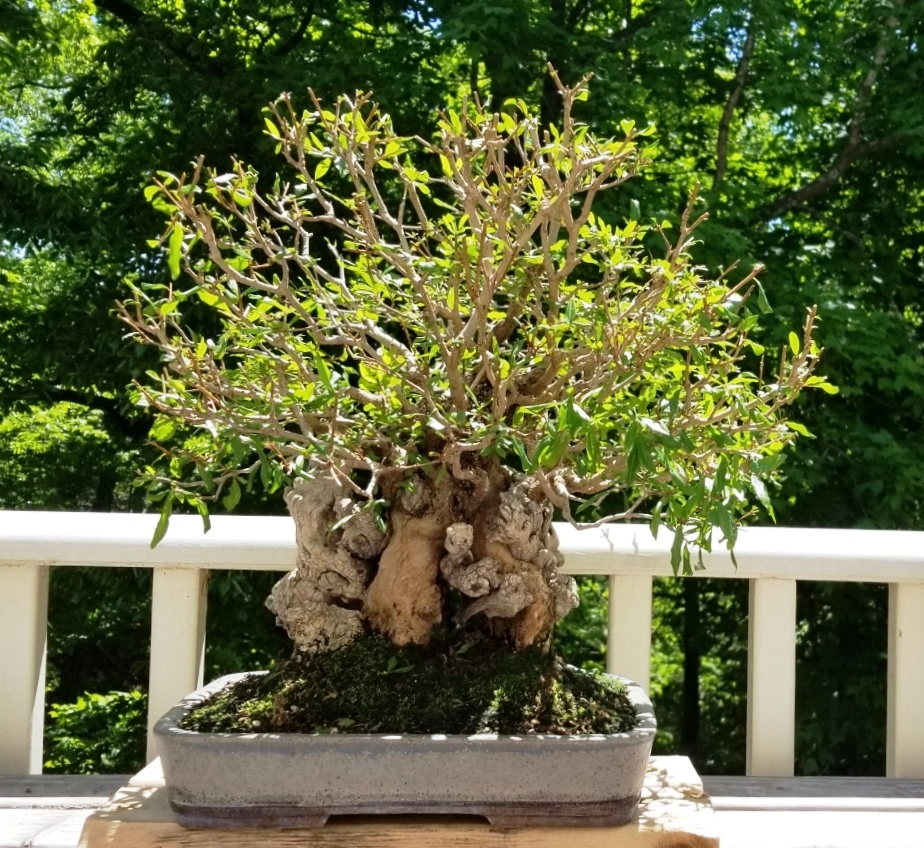|
Punicafolin
Punicafolin is an ellagitannin from the leaves of '' Punica granatum'' (pomegranate) and in '' Phyllanthus emblica''. Punicafolin is an isomer of tellimagrandin II and nupharin A, but the hexahydroxydiphenoyl group is not attached to the same hydroxyl groups in the glucose molecule. Punicafolin has been shown to have tumor suppressive effects in dogs.Tanimura S ''et al'' (2005) Suppression of tumor cell invasiveness by hydrolyzable tannins (plant polyphenols) via the inhibition of matrix metalloproteinase-2/-9 activity. ''Biochem Biophys Res Commun'' 330(4):1306-1313 References Pomegranate ellagitannins {{aromatic-stub ... [...More Info...] [...Related Items...] OR: [Wikipedia] [Google] [Baidu] |
Phyllanthus Emblica
''Phyllanthus emblica'', also known as emblic, emblic myrobalan, myrobalan, nelikai, Indian gooseberry, Malacca tree, amloki or amla, is a deciduous tree of the family Phyllanthaceae. Its native range is tropical and southern Asia. Description The tree is small to medium in size, reaching in height. The bark is mottled. The branchlets are finely pubescent (not glabrous), long, usually deciduous. The leaves are simple, subsessile and closely set along branchlets, light green, resembling pinnate leaves. The flowers are greenish–yellow. The fruit is nearly spherical, light greenish–yellow, quite smooth and hard on appearance, with six vertical stripes or furrows. The fruit is up to in diameter, and, while the fruit of wild plants weigh approximately , cultivated fruits average to . Chemical constituents The fruits contain high amounts of ascorbic acid (vitamin C), and have a bitter taste that may derive from a high density of ellagitannins, such as emblicanin A (3 ... [...More Info...] [...Related Items...] OR: [Wikipedia] [Google] [Baidu] |
Tellimagrandin II
Tellimagrandin II is the first of the ellagitannins formed from 1,2,3,4,6-pentagalloyl-glucose. It can be found in '' Geum japonicum'' and '' Syzygium aromaticum'' (clove).Purification and Characterization of Eugeniin as an Anti-herpesvirus Compound from Geum japonicum and Syzygium aromaticum. Masahiko Kurokawa, Toyoharu Hozumi, Purusotam Basnet, Michio Nakano, Shigetoshi Kadota, Tuneo Namba, Takashi Kawana and Kimiyasu Shiraki, JPET, February 1, 1998 vol. 284 no. 2, pages 728-735article Tellimagrandin II is an isomer of punicafolin or nupharin A, but the hexahydroxydiphenoyl group is not attached to the same hydroxyl groups in the glucose molecule. The compound shows anti- herpesvirus properties. Metabolism It is formed by oxidation of pentagalloyl glucose in '' Tellima grandiflora'' by the enzyme pentagalloylglucose: O(2) oxidoreductase, a laccase-type phenol oxidase. It is further oxidized to casuarictin, a molecule formed via oxidative dehydrogenation of 2 other gal ... [...More Info...] [...Related Items...] OR: [Wikipedia] [Google] [Baidu] |
Nupharin A
Nupharin A is an ellagitannin found in '' Nuphar japonica''.Tannins and Related Compounds. LXXV. : Isolation and Characterization of Novel Diastereoisomeric Ellagitannins, Nupharins A and B, and Their Homologues from Nuphar japonicum DC. Chemical & Pharmaceutical Bulletin, 25 January 1989, volume 37, issue 1, pages 129-134abstract It is a molecule with three gallic acid units and one hexahydroxydiphenic acid unit attached to a glucose residue. It is an isomer of punicafolin and tellimagrandin II Tellimagrandin II is the first of the ellagitannins formed from 1,2,3,4,6-pentagalloyl-glucose. It can be found in '' Geum japonicum'' and '' Syzygium aromaticum'' (clove).Purification and Characterization of Eugeniin as an Anti-herpesvirus Compou .... References Ellagitannins {{aromatic-stub ... [...More Info...] [...Related Items...] OR: [Wikipedia] [Google] [Baidu] |
Hexahydroxydiphenoyl
Hexahydroxydiphenic acid is an organic compound with the formula HO)3C6HCO2Hsub>2. It is the oxidatively coupled derivative of gallic acid It is a white solid, although samples are typically brown owing to oxidation. Occurrence left, 142px, Ellagic acid. Luteic acid and ellagic acid are the mono- and di lactone of hexahydroxydiphenic acid, respectively. Hexahydroxydiphenic acid is a component of some ellagitannin image:Castalagin.svg, 130px, Castalagin is a representative ellagitannin, characterized by coupled gallic acid substituents The ellagitannins are a diverse class of hydrolyzable tannins, a type of polyphenol formed primarily from the oxidative link ...s, such as casuarictin. See also * Diphenic acid References Ellagitannins Pyrogallols Biphenyls Trihydroxybenzoic acids {{phenol-stub ... [...More Info...] [...Related Items...] OR: [Wikipedia] [Google] [Baidu] |
Punica Granatum
The pomegranate (''Punica granatum'') is a fruit-bearing deciduous shrub in the family Lythraceae, subfamily Punicoideae, that grows between tall. Rich in symbolic and mythological associations in many cultures, it is thought to have originated from Afghanistan and Iran before being introduced and exported to other parts of Asia, Africa, and Europe. It was introduced into Spanish America in the late 16th century and into California by Spanish settlers in 1769. It is widely cultivated throughout West Asia and the Caucasus region, South Asia, Central Asia, north and tropical Africa, the drier parts of Southeast Asia, and the Mediterranean Basin. The fruit is typically in season in the Northern Hemisphere from September to February, and in the Southern Hemisphere from March to May. The pomegranate and its juice are variously used in baking, cooking, juice blends, garnishes, non-alcoholic drinks, and cocktails. Etymology The name ''pomegranate'' derives from medieval Latin ... [...More Info...] [...Related Items...] OR: [Wikipedia] [Google] [Baidu] |
